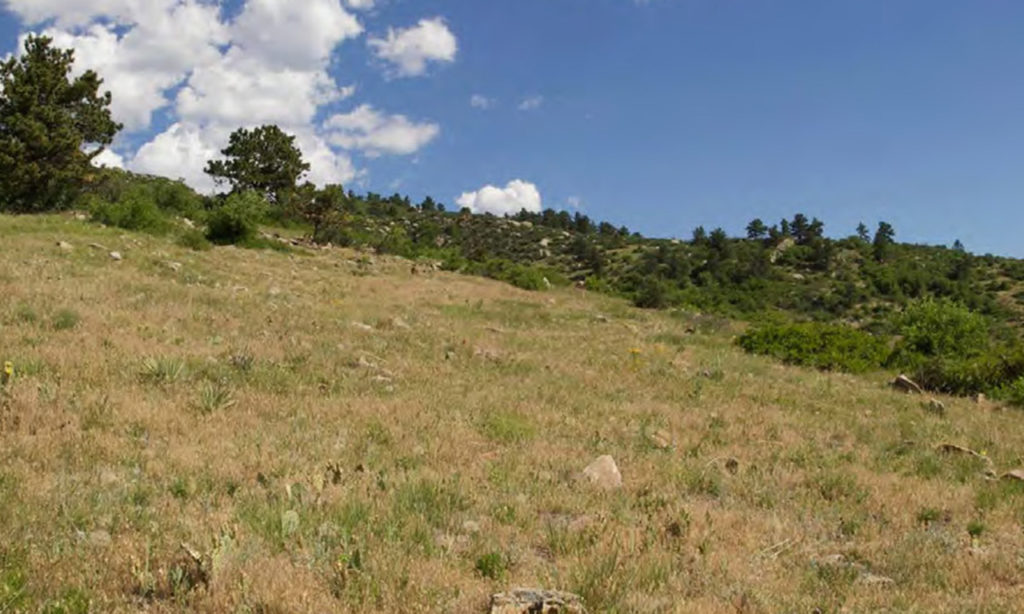The Boulder County Parks & Open Space Department offers grants for research on county open space lands each year. All proposals are reviewed by a team of resource specialists, and awarded research projects are monitored during their activities on open space.
The following is a summary of a 2020 study conducted by Anyll Markevich, Stephen R. Jones, and Christel Markevich. Their project focused on impacts of cheatgrass on mammal, bird, and butterfly populations in a Rocky Mountain foothills grassland.
Executive Summary
Understanding the influence of cheatgrass on mammal, bird, and butterfly populations is vital for proper wildlife management, especially as cheatgrass continues to spread across the western United States. Few studies have investigated these relationships. This study aims to give a preliminary indication of the effects of cheatgrass on wildlife populations of wildlife populations within a Rocky Mountain foothills grassland. We located eight grassland plots, varying in cheatgrass cover, at the base of the Rocky Mountain Front Range south of Lyons, Colorado. Remote triggering cameras, point counts, and transect counts were used to quantify numbers of mammals, birds, and butterflies respectively. We used a combination of ANOVA analysis and Linear Correlation Analysis to analyze our data.
We found that mammals were less numerous in areas with high cheatgrass cover. We did not find a statistically significant relationship between birds and cheatgrass, through birds numbers tended to decrease with increased cheatgrass cover. Butterflies and butterfly species richness (total number of species) showed statistically significant negative correlation with cheatgrass. Our analysis suggested that mammals and birds are unaffected by cheatgrass up to a certain threshold of cheatgrass cover above which they are repelled. Conversely, butterflies were linearly correlated with cheatgrass cover. The ability of mammals and birds to move across relatively large distances may allow them to find enough food even in areas interspersed with a certain amount of cheatgrass. Meanwhile the small home ranges of butterflies and their extreme dependence on local nectar sources may cause butterfly numbers to be reduced in tandem with the reduced availability of nectar sources in places where cheatgrass outcompetes the local vegetation.
Although our study does not prove causal relationships, we believe that the differences in animal populations among plots were in fact driven by cheatgrass infestation. Our belief is supported by the generally weak relationships we observed between animal populations and plot characteristics other than cheatgrass cover. Future research should investigate the impact on wildlife of different treatment methods to control cheatgrass. We recommend that such research compare wildlife populations over appropriately long timescales on untreated plots relatively free of cheatgrass, on untreated plots infested by cheatgrass, and on previously infested treated plots. The standard for treatment success should include restoration to conditions similar to those found in untreated, relatively cheatgrass free areas, not just improvement over untreated cheatgrass infested areas. Additional possible management implications of this study include:
- Agencies funding research investigating which cheatgrass removal methods are most beneficial to wildlife (including alternative methods such as soil regeneration).
- Biologists accounting for cheatgrass infestation when evaluating the quality of wildlife habitats.
- Agencies prioritizing native plant restoration in ecologically important areas, such as breeding grounds.

